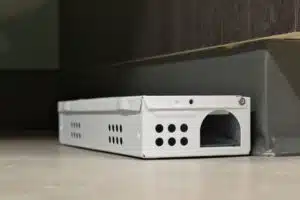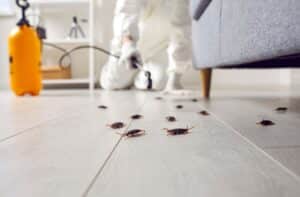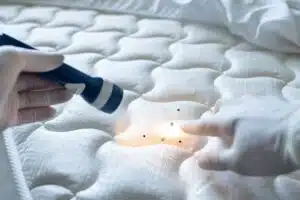Termites are some of the most common and well-known pests out there, and termite inspections are therefore some of the more frequent you’ll see in the pest control world. If you’re looking into scheduling a termite inspection for the first time, what should you expect from this process?
At A-1 Exterminators, we’re here to provide an unmatched selection of pest control services for clients around Salt Lake City, West Jordan, West Valley City, Sandy and nearby areas, including various termite inspections – such as required VA termite inspections and more. Here’s a rundown of what to expect during a termite inspection, from the signs it might be necessary all the way through your inspector leaving the home.
Signs a Termite Inspection is Needed
Firstly, before we dive into the actual inspection process, let’s go over some of the signs that might indicate you need a termite inspection. Some of these include:
- Mud tubes: Termites create mud tubes as shelter while they’re moving around between food sources – if you see small tunnels or lines of dirt on your walls or foundation, this could be cause for concern.
- Hollow wood: If any wooden structures in your home sound hollow when tapped on, it could be due to termites eating away at the inside.
- Discarded wings: Reproductive termites often discard their wings after swarming, so if you notice piles of tiny wings in areas like windowsills and other entry points, this is another warning sign.
Furthermore, if you notice drywall discoloration, live termites, and other similar signs, it may be time to schedule a termite inspection.
The Inspection Process
When your inspector arrives at the home, they will first do a visual inspection of both the interior and exterior. They’ll be looking for any visible signs of termite activity or damage, such as those listed above. After this initial walk-through, they may also use specialized equipment like moisture meters and infrared cameras to further detect any hidden termite presence.
Specific Elements We’re Looking For
During a termite inspection, our team of pest control experts will be looking for a number of different pieces of evidence that an infestation might be present. Here are some of the top things they’re looking out for:
- Significant wood damage: As termites eat through wood, they will leave behind damage that can be seen. In some cases, just knocking on your wood will showcase the fact that it’s become hollow, which is often the first sign of termite issues. Sometimes, our inspectors may use a screwdriver or other tool to tap on wood and listen for the sound of damage.
- Mud tubes: In addition to looking across walls and foundations, our inspectors will also be checking your crawlspace and basement areas for any mud tubes present. They’ll then wet their finger and try to wipe these away – if they can, this is another sign that you may have an active termite colony.
- Frass: This is the technical term for termite droppings, which are natural signs of termite infestations. Frass is comprised of tiny pellets that are brown, black or cream in color, and it’s commonly found around damaged wood.
- Paint buckling: In some cases, long-term termite damage will cause paint on walls and other surfaces to buckle or look uneven. This is due to the fact that termites eat through wooden structures that are painted over.
- Swarm evidence: Another sign of termite infestation is the presence of a pile of wings in or around your home. This is a common sign of termite swarms, which occur when reproductive termites leave an established colony to create new ones.
Areas Inspected
It’s also important to be aware of the different areas of the home that may be inspected for termites. These include:
- Exterior: The outside perimeter of your home, from ground level up.
- Interior: All interior rooms and spaces.
- Basement or crawlspace: A thorough inspection of these lower levels is crucial since they are common entry points for termite colonies.
- Cracks: Inspectors will also look for cracks in foundations, walls, and other structures that may be vulnerable to termite entry.
- Wood areas: All wooden structures, including doors, windows, and decks – plus outdoor wood areas like firewood or others.
As you can see, a termite inspection is a thorough process that covers all areas of the home where termites may be present. Our team at A-1 Exterminators have years of experience in conducting these inspections and can provide you with a detailed report on any potential issues found. Don’t hesitate to schedule your termite inspection today and ensure the safety and integrity of your home! Contact us today for this or any of our other pest control and bird control services around SLC, West Jordan, West Valley City, Sandy or any nearby area.



